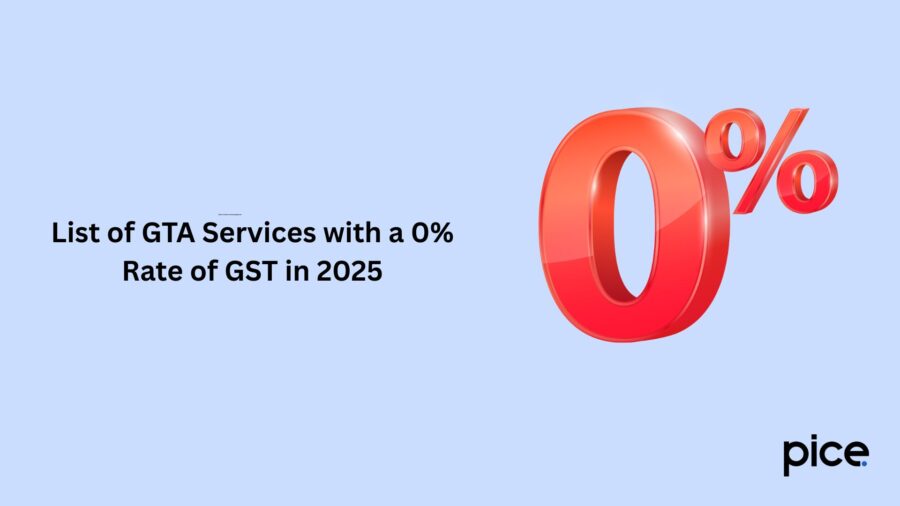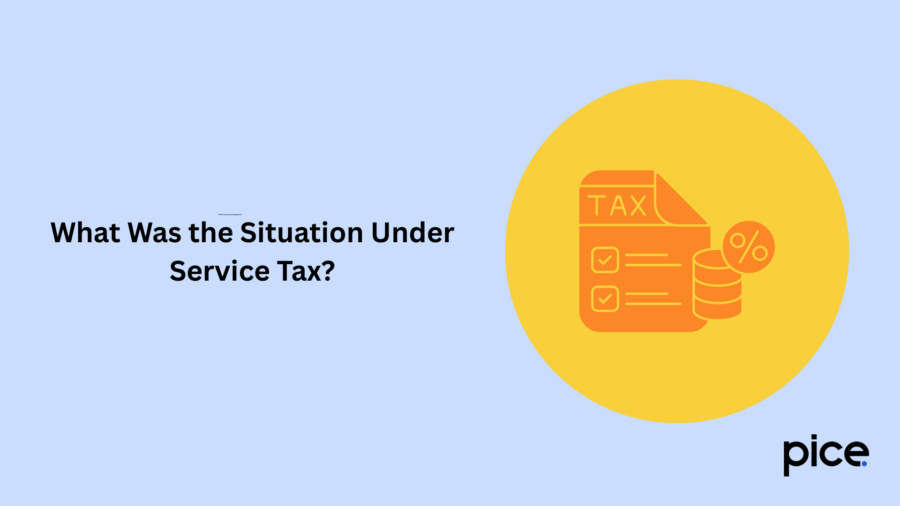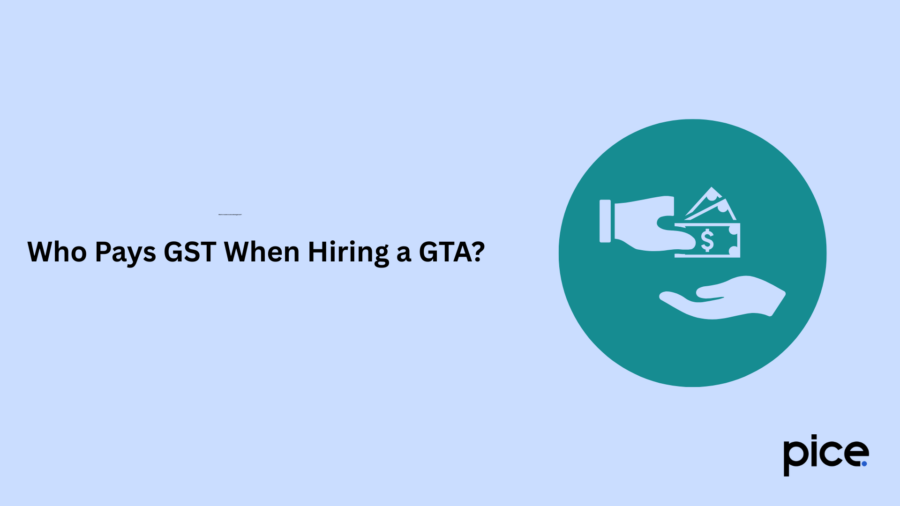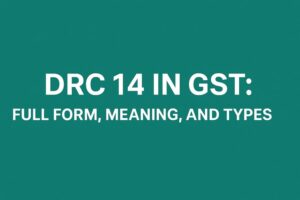Goods Transport Agency Under GST
- 13 Jun 25
- 13 mins

Goods Transport Agency Under GST
- What Is a Goods Transport Agency (GTA)?
- What Is a Consignment Note?
- What Are the Services Provided by GTA?
- List of GTA Services with a 0% Rate of GST in 2025
- List of GTA Services with a 5% to 18% Rate of GST in 2025
- What Goods Transportation Services Are Exempt from GST?
- What Was the Situation Under Service Tax?
- When Does a GTA Need to Register?
- Scenarios Requiring GTA Registration for GST
- Who Pays GST When Hiring a GTA?
- Which Businesses Are Required to Pay GST Under Reverse Charge for GTA Services?
- Who Needs to Pay GST Under Reverse Charge?
- Different Scenarios to Determine Who Pays GST for GTA Services
- Reverse Charge Implications for an Unregistered GTA
- Input Tax Credit (ITC) for GTA Services
- How to Create an Invoice for GTA Services?
- How Should a GTA Pay Their Tax?
- GST Returns that a GTA Must File
- Determining the Place of Supply for GTA Services
- Examples for Determining the Place of Supply
- Importance of ‘In Relation To' in the Definition of GTA
- Conclusion
Key Takeaways
- Consignment Note Is Key for GTA Status: A transporter qualifies as a GTA under GST only if a consignment note is issued, serving as proof of a transport contract.
- GST Rate Depends on Service Type: GTA services are taxed at 0%, 5%, 12%, or 18% based on the nature of goods, service recipients, and input tax credit eligibility.
- Reverse Charge Mechanism Applies Broadly: In most cases, GST on GTA services is paid by the service recipient (e.g., factories, companies) under reverse charge.
- GTA Registration Thresholds: A GTA must register for GST if the turnover exceeds ₹20 lakh (₹10 lakh for special category states), unless services are fully under reverse charge.
- Place of Supply Affects GST Type: For registered recipients, the supply location is their business address; for unregistered ones, it’s the goods pickup point—impacting whether IGST or CGST/SGST applies.
The Goods Transport Agency under GST is liable for transporting goods from one location to another to help the sender and receiver of goods. The place of supply determines the GST rate applicability for transporting such goods.
Further, the GST liability varies based on the aggregate annual turnover of GTA, registered or unregistered dealers. Here is a comprehensive overview of GST liability applicable on inter-state and intra-state goods transport to comply with Indian tax laws.
What Is a Goods Transport Agency (GTA)?

Goods Transport Agency (GTA) is a company liable to transport goods by road. Central Tax (Applicable Rate) notification highlights that the GTA needs to arrange the transportation of goods from one place to another by road by issuing a consignment note.
What Is a Consignment Note?
When the Goods Transportation Agency (GTA) receives goods for road transportation, it issues consignment notes as a formal document. This note is a proof of contract between the consignor and the GTA.
Here are the details included in a consignment note:
● Unique serial number
● Names of the consignor and the consignee
● Details of vehicle registration
● Description of goods
● Origin and destination places
● Details about the person liable to pay the service tax (consignor, consignee or GTA)
What Are the Services Provided by GTA?
The services provided by GTA are as follows:
● Transportation Arrangement: The GTA is liable to coordinate the movement of goods from the consignor to the consignee.
● Loading and Unloading: The company is liable to handle the physical movement of goods.
● Tracking and Tracing: The GTA is liable to track and trace the goods based on shipment location and movement.
● Insurance (Optional): The company can choose to assist with insurance and customs clearance wherein it deals with import or export procedures.
● Issuing Consignment Note: For each shipment, the GTA needs to issue a consignment note.
● Vehicle Management: The GTA is responsible for arranging vehicles and ensuring that vehicles are available for goods transportation.
List of GTA Services with a 0% Rate of GST in 2025

The following table illustrates the GTA services with a 0% GST rate:
| SAC Code | Description of GTA Service for Various Purposes | GST Rate |
| 9965 | GTA services for transporting goods (including used household goods for personal use) | 0% |
| 9965 or 9967 | GTA services to agricultural produce | 0% |
| 9965 or 9967 | GTA services to milk, salt, and grains (including flour, rice, pulses) | 0% |
| 9965 or 9967 | GTA services to organic manure | 0% |
| 9965 or 9967 | GTA services to newspapers/magazines | 0% |
| 9965 or 9967 | GTA services to relief materials for victims of natural or man-made disasters | 0% |
| 9965 or 9967 | GTA services to defence/military equipment | 0% |
| 9965 or 9967 | GTA services to unregistered persons (including an unregistered casual taxable person) | 0% |
| 9965 or 9967 | GTA services to Central Government departments/establishments | 0% |
| 9965 or 9967 | GTA services to State Government departments/establishments | 0% |
| 9965 or 9967 | GTA services to Union Territory departments/establishments | 0% |
| 9965 or 9967 | GTA services to Local authorities or Governmental agencies (registered only for TDS under the CGST Act) | 0% |
List of GTA Services with a 5% to 18% Rate of GST in 2025
The following list presents the GTA services with a 5% to 18% GST rate:
| SAC Code | Service Description | CGST | SGST or UTGST | IGST | Conditions |
| 9965 | The GST liability is not with GTA | 2.5% | 2.5% | 5% | No input tax credit is available |
| 9965 | GTA has a GST liability | 2.5% or 6% | 2.5% or 6% | 5% or 12% | No input tax credit is available for GTA services taxed at 2.5%. |
| 9967 | Additional services in transport (Excluding GTA services which fall under SAC code 9965) | 9% | 9% | 18% | – |
What Goods Transportation Services Are Exempt from GST?
Here are the goods transportation services exempt from GST:
● Transportation of goods using inland waterways or roads (excluding the GTA services or services rendered by a courier agency)
● Goods transportation, including grains, milk, manure, and others
● Transportation of goods via a single carriage below the specified threshold of ₹750 or ₹1,500
What Was the Situation Under Service Tax?

Reverse Charge Mechanism remained applicable under the service tax regime, similar to the GST regime. However, the rules were as follows:
● 40% of the value of supplies was taxable with abatement for 60% of the value, for transportation of used household goods
● 30% of the value of transportation of general goods was taxable with a 70% abatement
When Does a GTA Need to Register?
Under the following conditions, GTA has to register under GST:
● If the annual turnover exceeds ₹20 lakhs for states excluding special category ones
● In case the aggregate annual turnover is more than ₹10 lakhs for special category states
Notably, if the services are categorised under the Reverse Charge Mechanism, the GTA need not register under GST.
Scenarios Requiring GTA Registration for GST
The tables below illustrate the scenarios for GST registration for GTA:
Scenario 1:
Here is the first scenario for GST registration:
| Service | Turnover | GST Payer |
| If it transports goods of a registered dealer or other seven entities | ₹9 lakh | Registered dealer or service recipient under Reverse Charge Mechanism |
| In case it transports goods of an unregistered dealer (URD) | ₹5 lakh | GTA has a tax liability |
| Total Turnover | ₹14 lakh | Since the aggregate annual turnover is less than ₹20 lakh, GTA need not register under GST. |
Scenario 2:
Here is the second scenario illustrating the need for GST registration for GTA:
| Service | Turnover | GST Payer |
| If the GTA transports goods of a registered supplier | ₹18 lakh | Registered dealer has the GST liability or the recipient of goods in case of the Reverse Charge Mechanism |
| In case the GTA transports goods of an unregistered supplier | ₹4 lakh | GTA has a GST liability |
| Total Turnover | ₹22 lakh | GTA will have to register under GST as the total turnover exceeds ₹20 lakh and services are provided to an unregistered supplier |
Scenario 3:
Here is the third scenario illustrating the GST registration requirements for GTA:
| Service | Turnover | GST Payer |
| In case GTA transports goods of a registered supplier or any of the seven entities | ₹26 lakh | Tax liability is with the registered supplier or recipient of services (under RCM) |
| Transportation of goods of an unregistered supplier | ₹0 lakh | Not Applicable |
| Total Turnover | ₹26 lakh | As per Notification Number 05/2017, GTA will not have to register under GST despite turnover exceeding ₹20 lakh. |
Who Pays GST When Hiring a GTA?

The recipient of service is liable to pay GST on Goods Transport Agency services, under the Reverse Charge Mechanism, and not the service providers. For instance, businesses hiring GTA including corporations, factories, and other entities, bear the tax liability.
Notably, if the GTA chooses to pay GST at 12% with ITC (Input Tax Credit), then the GST liability is with GTA.
Which Businesses Are Required to Pay GST Under Reverse Charge for GTA Services?
If GTA does not pay Central Tax at a 6% rate, the recipients of services needs to bear the tax liability. The recipients, however, need to be from a taxable territory and the categories mentioned below:
● Factories registered under the Factories Act, 1948
● Societies registered under the Societies Registration Act, 1860 or any other applicable law
● A registered person under CGST, SGST, UTGST or IGST (Central/State/Union Territory/Integrated Goods and Services Tax)
● A Co-operative society
● A corporate body established by or under any law
● A partnership firm (registered or unregistered)
● Casual taxable persons
Who Needs to Pay GST Under Reverse Charge?
Based on the person paying freight, here is the entity liable to pay GST under reverse charge for the road transportation services or road transport services:
1. If the sender pays the freight payment
In case the sender (consignor) falls under special categories, they need to pay GST on a reverse charge basis. Notably, the consignor or sender is the recipient of transportation services.
2. If the receiver pays the freight payment
When the consignee or receiver is considered the recipient of services and falls under special categories, they have the GST liability.
Different Scenarios to Determine Who Pays GST for GTA Services
Here are different instances determining the GST liability for GTA services:
| Supplier/Consignor | Receiver of Goods/Consignee | Person Paying Freight | A Person with GST Liability |
| A registered or unregistered company | An unregistered or registered partnership firm | Company | Company |
| An unregistered or registered partnership firm | Registered Dealer A | Dealer A | Dealer A |
| A registered or unregistered partnership firm | Registered Dealer B | Firm | Firm |
| An unregistered or registered Co-operative Society Ltd | Registered Dealer A | Dealer A | Dealer A |
| A registered or unregistered Co-operative Society Ltd | Registered Dealer A | Co-operative Society Ltd | Co-operative Society Ltd |
| Registered or unregistered Company A Ltd. | Unregistered or registered Company C Ltd. | C Ltd | C Ltd |
| URD A | Registered Dealer B | URD A | Dealer B |
| URD A | Registered Dealer B | Dealer B | Dealer B |
| URD A | URD Z | URD Z | Exempted |
Reverse Charge Implications for an Unregistered GTA
Earlier, if registered businesses received goods or services from unregistered suppliers, with a cost not more than ₹5,000 per day, they were exempted from GST liability. With revisions in the regulations, the reverse charge mechanism applies to specific unregistered purchases, as declared by the government.
Input Tax Credit (ITC) for GTA Services
ITC claims for GTA vary based on the chosen GST rate as follows:
1. ITC When the GTA Pays GST
GTA has the option to choose a 5% or 12% GST rate based on the tax regime they opt for at the beginning of a financial year. If they choose a 12% GST, they can claim ITC on inputs and services purchased. However, if GTA opts for a 5% GST rate, they cannot claim ITC.
2. ITC When the Service Receiver Pays GST Under Reverse Charge
If the service receiver operates under a reverse charge mechanism, he/she can claim ITC instead of GTA. This helps the service recipient reduce their GST liability.
How to Create an Invoice for GTA Services?
You need to include the following details to create a GST-compliant tax invoice for GTA:
- Name, GSTIN and address of the GTA
- Unique invoice number and date of invoice
- Consignor and consignee details
- Description of transported goods
- Description of service
- GST rate and amount
- Total amount including the GST payable
Notably, invoice matching with transaction details is crucial for a transportation business through GTA.
How Should a GTA Pay Their Tax?

A registered GTA can pay GST online using the GST portal with payment methods like credit/debit cards, UPI or net banking. For offline payment, GTA has to generate a GST challan online and pay at one of the authorised banks.
GST Returns that a GTA Must File
The GST returns that a GTA needs to file are as follows:
| GST Return | Purpose of Filing |
| GSTR-1 | Outward supplies details filed quarterly or monthly |
| GSTR-3B | Summarises all transactions filed monthly |
| GSTR-9 | Annual return summarising yearly transactions |
Determining the Place of Supply for GTA Services
Here is how to determine the place of supply for GTA based on a registered or unregistered recipient of services:
1. Registered Recipients: For a registered recipient, the place of supply is the registered business address, determining inter-state or intra-state transactions (IGST/CGST and SGST).
2. Unregistered Recipients: For an unregistered recipient, the place of supply is the location from where GTA collects goods; this determines IGST, CGST and SGST.
Examples for Determining the Place of Supply
Here are some scenarios depicting various transactions to determine the place of supply:
Scenario 1:
A registered dealer Mr X in Maharashtra hires a GTA for goods transportation from Mumbai to Pune.
Place of Supply: Maharashtra
Applicable GST: CGST and SGST as it is an intra-state supply
Scenario 2:
A registered dealer Mr Y in Karnataka hires GTA to transport goods to Chennai from Bangalore.
Place of Supply: Karnataka
Applicable GST: IGST as it is an inter-state goods transport
Scenario 3:
An unregistered dealer Mr Z in Delhi hires GTA to transport goods to Haryana from Delhi
Place of Supply: Delhi (where GTA collects the concerned goods)
GST Applicable: IGST as it is an inter-state transport of goods
Importance of ‘In Relation To' in the Definition of GTA

The term 'in relation to' refers to goods connected to GTA and actual transportation by road associated with the actual movement of goods. This includes GTA activities like unloading, loading, packing, unpacking and others directly associated with transportation.
Notably, independent services that are not directly related to transportation are not categorised under GTA. Services directly linked to goods transportation and GTA have consistent treatment under the GST laws.
Conclusion
Goods Transport Agency under GST has to register themselves as per GST laws if their annual turnover exceeds ₹20 lakh (₹10 lakh for special category states). Further, the registration requirements vary based on whether GTA transports goods of registered or unregistered dealers.
Notably, GTA has a choice to opt for a 5% or 12% GST regime at the beginning of a financial year. If they opt for the latter, they can claim ITC to reduce their tax burden and liability. However, under the reverse charge mechanism, the service recipients are eligible to claim ITC on input services.
Ensure you adhere to the applicable GST laws for transparency and tax compliance. In the transportation and logistics sector, compliance requirements are as strict as in other sectors. Associations of persons well aware of the laws can help you reduce the compliance burden.
💡If you want to streamline your invoices and make payments via credit or debit card or UPI, consider using the PICE App. Explore the PICE App today and take your business to new heights.
 By
By 

















